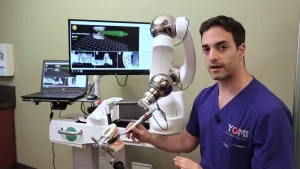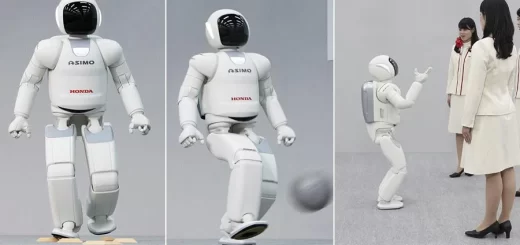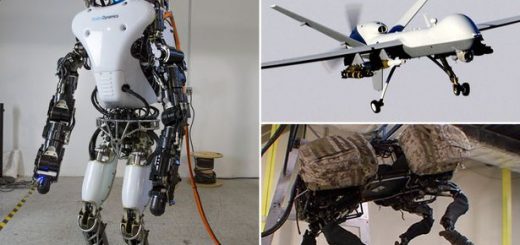Nanobots in dentistry, Dental Implantology, Micromachine for automatic endodontic treatment
Nanobots are microscopic robotic machines, that are close to a nanometer in size, they consist of thousands of mechanical pieces, they can be used to interact with or manipulate cells in the human body, nanobots are expected to change medical diagnosis and treatment, as well as methods of drug delivery.
Microrobots
Dental robotics offers consistency, superior workflow efficiency, and increased patient safety; all of which lead to higher success rates, which is promising for all dental specialties, Considering endodontic procedures require extreme precision and accuracy, endodontic microrobots can improve the quality and reliability of endodontic therapy.
Much like dental implant surgery, treatment outcomes vary depending on clinician experience and skill, However, endodontic microrobots provide an opportunity to increase the quality of endodontic treatment and to reduce errors during the procedure, The microrobot is mounted on the tooth in need of treatment and it is computer-controlled and monitored as it performs the root canal procedure, the micromachine offers automated precision probing, drilling, cleaning, and filling to assist the clinician in supplying error-free therapy.
While navigational surgery, robotics, and microrobots are making their way into dental treatment, other opportunities for robotics within the dental field exist through nanotechnology, Nanotechnology refers to the designing, building, and engineering of nanobots.
Nanodentistry
Robotics-assisted dentistry will prove to be essential in the maintenance of oral health and repair of oral lesions using nanomaterials, nanorobots, and engineering of novel diagnostic and therapeutic modalities, While these therapeutic interventions alter our contemporary views and understanding.
The application of nanotechnology in dentistry is also known as nano dentistry, It allows for treatment possibilities in restorative dentistry, orthodontics, and periodontics, Within restorative dentistry, nanorobotics can be used in cavity preparation, restoration, and even dentition renaturalization, Due to their size, nanobots work at the atomic, cellular, and molecular level to perform major tasks and can help dentists in managing complicated cases at the microscopic level easily.
Dental materials have the potential for improvement, as nano solutions can ensure homogeneity in bonding agents and nanofillers can improve hydrophilic properties for impressions, Nanotechnology can help in bone replacement and antibiotic delivery via nanoencapsulation while offering continuous oral health maintenance using dentifrobots to destroy pathogenic bacteria found in plaque biofilms, nano dentistry can offer alternative techniques to induce anesthesia and manipulate tissue to help in managing complicated restorative and periodontal treatments.
Dental Implantology
The outcome of dental implant treatment depends on the precision of implant placement, dentists use surgical template guidance and navigation systems to reduce the errors of implant positioning, Robot-assisted implant surgery allows for increased flexibility, stability, and accuracy of implant placement. Robotic implantology can be used in complicated implant cases with decreased alveolar bone.
The formation of computer-assisted dental implantology was established on a merging of prosthodontics and dental implantology the idea of CT-scan analysis and prosthetic-driven implant dentistry has been investigated, Robotic implant systems require surgical tracking in real-time for accurate implant placement. Dental Robotics can execute the implant drilling guide to help the surgeon during implant osteotomy, and will place dental implants in the apical border.
In 2012, The autonomous robotic system that has 6 degrees of freedom (DOF) used a volume-decomposition-based system to place the root-shaped dental implant, the 3-DOF robotic system with a stereo camera was developed that could detect and modulate the dental handpiece to ensure implant placement according to the preoperative protocol, The planned surgical procedure was applied automatically by the computer to ensure the correct cutting site and applied force.
In 2017, YOMITM became the world’s first computerized navigation robotic system approved by the FDA to augment the clinical accuracy of dental implant surgery, YOMI offered physical guidance of the drill’s depth, orientation, and position, thereby avoiding custom fabrication of surgical guide and hand deviation of the operator, The navigation system delivers high predictability and precision while preparing the dental implant osteotomy employing vibrational feedback, However, the YOMI system is expensive and operates under supervision.
In 2017, Zhao presented the world’s first autonomous implant placement system, Surgical procedures were executable without any intervention by the dentist, and surgical tasks can be modified automatically with a high degree of autonomy, However, validation data are few regarding the feasibility and reliability of the implant positioning, and the robot’s intelligence decisions.
The Fourth Military Medical University Hospital and Beijing University developed the autonomous dental implant robot in 2017, The robot system can prevent surgical errors and address a shortage of highly competent dentists in China, The system includes a mechanical robot, DentalNavi software, an implantation foundation, and an image-guided foundation, the operation foundation, and the coordinates of patients, and it can calibrate with the image-guided system.
An autonomous surgical robotic system studied in vitro insertion of 5-cm long zygomatic implants in edentulous maxillae and recorded an elevated level of precision in the implant placement, Another study found that a 6-axis robotic arm could enhance the precision of the surgery in zygomatic dental implant placement, force feedback application utilizing a haptic tool might improve the robotic system.
Oral and Maxillofacial Surgery
Computer-assisted dental implant surgery is used more and more often by clinicians, The system uses the cone-beam computed tomography (CBCT) analysis but also the standardization of bi-dimensional radiographs, Robotic surgery is carried out in the upper aerodigestive tract reachable via the oral cavity, Transoral robotic surgery, having a stereoscopic vision, multi-articulated instruments, and robotic arms, permits intervention of the oropharynx with minimal invasiveness.
Robot-assisted surgery can offer excellent local control in the treatment of low-risk oral squamous cell carcinoma. Transoral robotic surgery can be used for the surgical treatment of obstructive sleep apnea, Based on the apnea-hypopnea index, obstructive sleep apnea is categorized into mild, moderate, and severe.
Although poor patient compliance and intolerance are considerable issues with continuous positive airway pressure treatment, many surgical options are available for treating obstructive sleep apnea including bariatric surgery and weight control in morbidly obese individuals, maxillomandibular osteotomy, hyoid bone suspension, resection of tongue base employing radiofrequency or CO2 laser, uvulopalatopharyngoplasty, and so forth.
In 2010, Vicini et al, first proposed transoral robotic surgery for treating obstructive sleep apnea, Their study involved a total of 10 human participants and examined the effectiveness of tongue base reduction with transoral robotic surgery, They reported that robot-assisted surgery resulted in minimal morbidity and was well-tolerated by the patients, the apnea-hypopnea index was significantly improved in all 10 participants.
Positioning must be performed by the surgeon before surgery, Real-time tracking was performed by the robot by registering the patient’s movements during the surgery, The jawbone skull phantom was used to perform preliminary experiments for the orthognathic surgery, the available software needs to be upgraded and hardware safety improved before automated orthognathic surgery being investigated in human trials.
Tooth Preparation
The tooth preparation robotic system consisted of the following hardware parts: the tooth fixture that connects the target tooth with the robotic tool and safeguards the adjoining tooth from laser-cutting; the 6-DOF robotic arm; the efficient low-heat laser appropriate for the preparation of hard tissue; the CAD/CAM software to generate the 3D motion path of the laser and to design the target shape for tooth preparation; and the intraoral 3D scanning machine.
Robotic system for bending orthodontic arch-wire
SureSmile OAW bending robot consists of the robot installed on to table or base support surface, The OAW or other medical instruments are held by a first gripping tool, and the second gripping tool is installed to the periphery of the mobile 6-DOF robotic arm with the proximal part installed to the base.
You can download Science online application on Google Play from this link: Science online Apps on Google Play
Dental Robotics uses, advantages, disadvantages, types & Yomi robot
Computer technology in dentistry (Digital dentistry) uses, types, cons & pros
Nanotechnology, Nanorobotics uses & Nanorobots in Biomedical applications
The importance and uses of nanotechnology in medicine
The applications, advantages & possible harmful effects of Nanotechnology
Robotic Surgery vs. Laparoscopic Surgery, Robot-assisted surgery features, benefits & drawbacks
Surgical robots types, advantages, disadvantages, How is robotic surgery different from traditional




